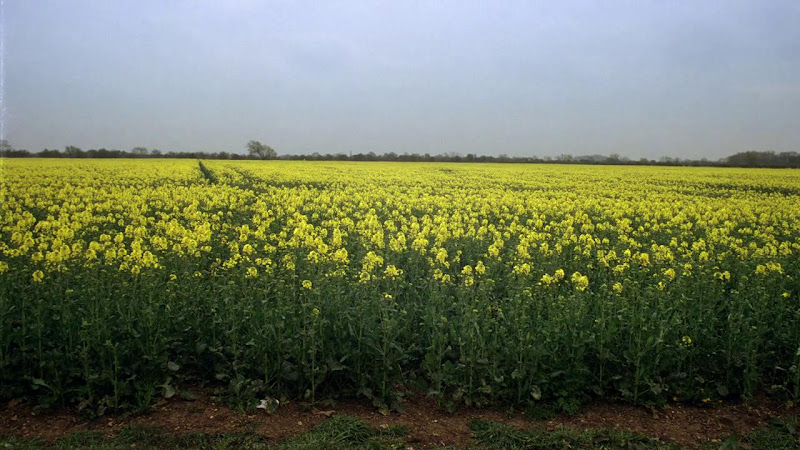I



London - Patrick Keiller, 1994, 35mm
II

Robinson once said that he believed that if he looked at the landscape hard enough, it would reveal to him the molecular basis of historical events, and in this way he hoped to see into the future.--Robinson in Ruins, narration by Patrick Keiller, 2010.
III



Robinson in Ruins - Patrick Keiller, 2010, 35mm
IV

I think the first long takes were probably rape fields; after Brize Norton there are those two shots of oil seed rape. What struck me is that they looked like a crowd of people, and they looked as if they were saying ‘no!’ There seemed to be something going on in this field, a combination of these interestingly structured plants, with the stalks moving in a very strange way, and the fact that when you get closer you see them slightly differently. I was very taken with this: it’s not so much a question of whether one wants to make a long take, it’s a question of whether you can bear to stop.--Patrick Keiller, from the unedited transcript for this interview with Daniel Trilling, unpublished.
V



Robinson in Space - Patrick Keiller, 1997, 35mm
VI

As a cinematographer, Robinson was interested in opium. He often liked to quote Walter Benjamin: 'the true creative overcoming of religious illumination certainly does not lie in narcotics. It resides in a profane illumination, a materialistic, anthropological inspiration...'--Robinson in Ruins, narration by Patrick Keiller, 2010.
VII







The Old Place - Jean-Luc Godard & Anne-Marie Miéville, 1999, video
VIII

Film offers a kind of permanence to subjectivity. On a bad day, or in a bad light, even the architecture of Gaudi might lose its immediate appeal, but in a film one's transitory experience of some ordinary, everyday detail as breathtaking, euphoric or disturbing — a doorway, perhaps, or the angle between a fragment of brickwork and a pavement — can be registered on photographic emulsion and relived every time the material is viewed. On the other hand, when actual extra-ordinary architecture is depicted in films it's often easy to conclude that something is missing, as if the camera has nothing sufficiently revelatory to add, and nothing to improve on a visit to the actual building.--Patrick Keiller, 'Architectural Cinematography', This Is Not Architecture (Routledge, 2002), p. 43.
No comments:
Post a Comment